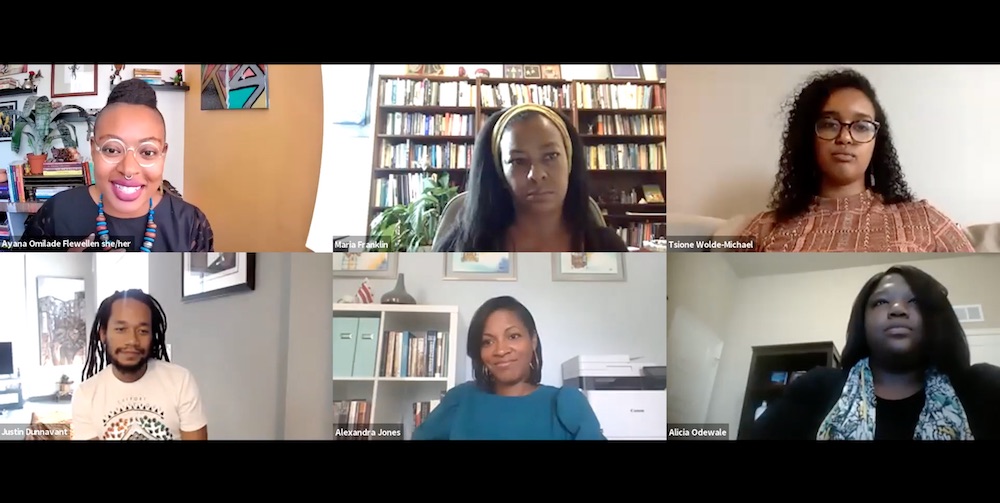Archaeologists Respond to the Black Lives Matter Movement

Amid the wave of anti-racist protests and unprecedented widespread support for the Black Lives Matter movement in recent months, anthropologists are scrutinizing the legacy of racism in their discipline.
The workforce in archaeology in the U.S. and the U.K. in particular is overwhelmingly white, as archaeologists William White and Catherine Draycott recently wrote for SAPIENS. That lack of diversity creates many problems—including a narrow view of history that tends to exclude Black scholars and Black narratives.
In late June, the Society of Black Archaeologists, the Theoretical Archaeology Group of North America, and the Columbia Center for Archaeology held a virtual panel over Zoom for a discussion about what meaningful change could look like in their field. Several crucial ideas arose, including shifts in how archaeology could be taught and practiced.
Around 2,000 people tuned in for the live discussion, and a few dozen joined for follow-up workshops on July 8. “What I actually want to see is real change and not just lip service, because lip service has gotten us where we’re at to this day,” said historical archaeologist Alexandra Jones in the June 25 discussion.
Ayana Omilade Flewellen, of the University of California, Riverside, made a similar point, “The statements are easy, but actually doing that long-term work to really undo ingrained practices in this field of exclusion, that is going to take time.”
The panel underscored just how profoundly this momentous period could shape the future of archaeology. “I think we’re in a new revolution now—or about to have one—where it is a Black feminist, … it is community centered, it is destabilizing everything that people think when they think about archaeology,” said Alicia Odewale, an archaeologist at the University of Tulsa.
The specific recommendations were wide ranging. For example, panelists noted that scholars can do more to help young Black students pursue archaeology. Professors can scrutinize their course plans to ensure they incorporate Black archaeologists and Black history. Non-Black academics can collaborate with departments, groups, or universities that, as Flewellen noted, “cater to African and African diasporic students” to better serve those pupils. And academics can work to remove economic barriers to essential research experience such as field school participation.
For instance, after noticing that many young people in her Washington, D.C., neighborhood were unfamiliar with archaeology, Jones founded the Archaeology in the Community program to improve awareness of archaeology’s importance through student programs and public events. Several panelists—including Odewale, Jones, Flewellen, and Justin Dunnavant—work together on a field school they’ve established on St. Croix, U.S. Virgin Islands, to train local high school students and college students from historically Black institutions in archaeological methods while excavating an 18th-century sugar plantation.
In terms of the practice of archaeology, several speakers highlighted the importance of community engagement, a movement that gives communities leadership and agency in scholarly studies of their own people, history, or culture. That approach counteracts centuries of damage done by traditional methods that often privileged or empowered academics and scientists over the communities they studied. Odewale is involved in two community-led archaeological efforts to better understand the consequences of the Tulsa race massacre, a devastating racist attack on a Black community in Oklahoma nearly a century ago. Panelists pointed out how scholars can propel more such efforts by proactively partnering with people who live in their area of study or might be affected by archaeological work.
The panel also addressed how Black archaeologists and students often shoulder the burden of finding solutions to diversify the field. Several panelists commented on how Black archaeologists should not have to champion anti-racism efforts alone, not least of all given their limited numbers. “We’re already serving on one or more committees … a lot of us are already stretched thin,” said Maria Franklin, an archaeologist at the University of Texas at Austin.
To relieve that burden, non-Black archaeologists can advocate for their Black peers and students alike, panelists noted. They can also consult resources from groups such as the Society of Black Archaeologists and the Association for the Study of African American Life and History.
Indeed, a recurring message was the need for non-Black archaeologists to serve as accomplices, going beyond allyship in order to change existing systems. Odewale added, “I think that it’s going to be clear who’s part of the revolution and who’s not.”


































